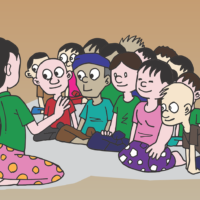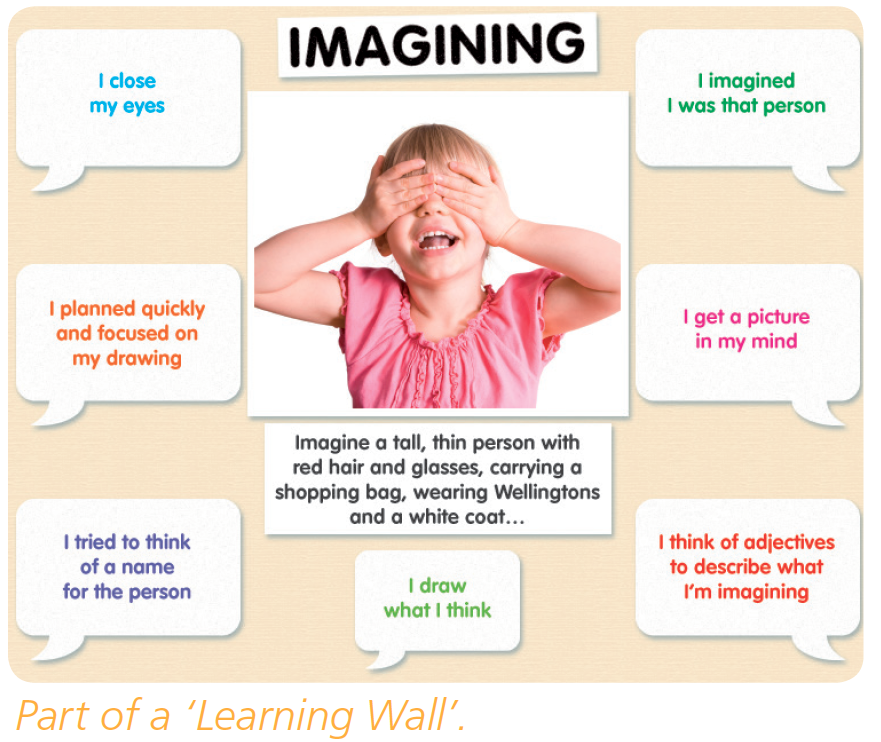Are you sitting comfortably? Then I’ll begin.
Often on our training days we ask ‘What do good learners do?’ As teachers, we know that good learners can listen attentively for information, engage with the material, stay on task, and so on. So a teacher might quite reasonably respond to that question with ‘We want them to sit quietly and listen in order to hear the instruction for the next learning activity.’ But what do children hear?
My daughter thrives on being ‘good’: she loves following the rules, helping others, and seeing a smile on other people’s faces when she has met or exceeded expectations. But what happens if those expectations aren’t clearly defined? The move up from Reception to Year 1 has been tricky for her. Having been a ‘Superstar’ most days in Reception, she was looking forward to gaining more stars from her new teacher. But days came and went, and she just couldn’t get those stars. After a week she was truly dejected: ‘I haven’t got a Superstar once, let alone got onto the rainbow’ she whimpered. We took time to reflect on what she had or had not been doing, and I asked what was required to get a star. Luckily, her teacher had set a specific piece of behaviour for awarding the precious star, a particular routine she wanted to instill early in the term: the whole class sitting on the mat, listening for instruction. But there was a problem: ‘I am sitting nicely on the mat! I’m the first one there!’
Another few days, and still no star. I suspect there was something more that my daughter hadn’t quite twigged, so together we went to her teacher after school and asked her exactly what it was that my daughter needed to do to get the star she so badly wanted. “She is on the mat,’ her teacher kindly explained, ‘but…she whistles’. Ah, there it was. My daughter whistles absent-mindedly, often not realising that she is doing it. By whistling on the mat she was creating a distraction for the other children. Moreover, she herself wasn’t engaged and ready to learn.
But how could I get her to really understand the issue? The thing about some five year olds, my daughter included, is that they won’t be told! Much better for her to come to understanding under her own steam. So I decided to try a little demonstration – when she tried to talk to me that evening, I hummed gently to myself. A pout appeared, arms were folded, and she demanded “Mummy, concentrate! Aren’t you listening to me?!”
“What gives you the impression I’m not listening?” I asked, disingenuously.
“Because you’re humming!”
“Ah, yes. So when you’re sitting on the mat and whistling, maybe your teacher doesn’t think you’re really listening either. Do you think that might be why you haven’t got a star yet?”
I could almost see the cogs turning and the light bulb switching on. After a bit more chat and reflection, my daughter knew exactly what was expected. And yesterday, bingo! A star, and a smile at last.
But at heart this was a case of a gap in communication and understanding: the teacher says “I need them to be on the mat, alert and alive to their learning, ready for the task ahead.” The child hears “I need to be on the mat”. Many classrooms have mat-time expectations displayed on posters – sit nicely, be quiet, listen, no talking. But these instructions don’t get to the heart of what teachers mean. Yes, children need to be sitting quietly in order to hear, but moreover, we want them to be attentive, ready, and engaged (not distracted or distracting!). Mere presence on the mat isn’t enough.
Do you have similar posters or prompts in your classroom for mat time (or other routines like lining up before and after break)? Why not try switching them for something more meaningful. What other words could you use instead of ‘listen, no talking, eyes forward’? And don’t forget to have the conversation with your class about what your expectations are really all about, what you actually want from them, and why it’s important!





No comments yet.